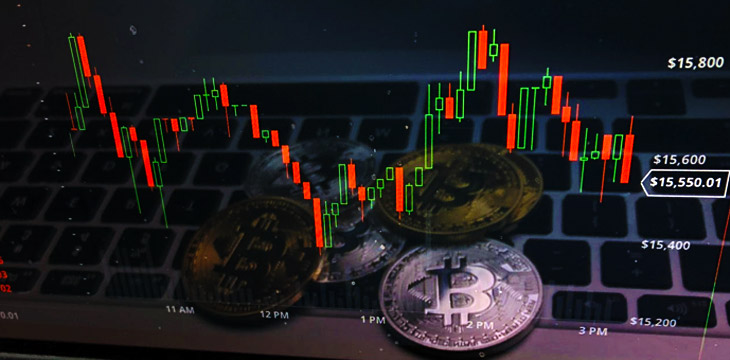|
Getting your Trinity Audio player ready...
|
This series looks back on the history of Bitcoin. Read parts one, two, three, four, five, and six.
Bitcoin kicked off its sixth year of existence on a high. In 2014 the price was just shy of $800, and it looked like it was set to have another record-breaking year. Adoption was also catching on and it seemed like Satoshi’s vision of a global peer-to-peer digital currency was finally becoming a reality.
Adoption was the theme of the year, and the signs showed as early as January when Blockchain.info revealed that it had surpassed 1 million Bitcoin wallets. This was the first time that a Bitcoin wallet had hit such a milestone and it was quite clear that adoption was in high gear. In March, ecommerce giant Overstock revealed that it had hit $1.6 million in Bitcoin sales, surpassing its targets. The company pledged to keep at least 10% of its revenue from this venture in Bitcoin.
On the academic front, the New York University became the first top school to offer crypto classes. The classes were conducted as a joint initiative by the university’s law and finance departments.
In May, the U.S. elections agency ruled that politicians could receive donations in Bitcoin. This was a big step for the digital currency and indicated that government agencies were warming to it, giving a glimmer of hope that they could one day implement enabling regulations.
Additionally in May, Dish Network became the largest merchant yet to accept Bitcoin payments. The satellite television company partnered with Coinbase for the payments. It was just the first of many large companies that would begin to accept Bitcoin payments in 2014.
By July, just two months later, online retailer Newegg announced that they too would start to accept payments in Bitcoin. The company, which does over $2 billion in revenue annually, offered a 10% discount to its customers who paid in Bitcoin. It partnered with BitPay on the initiative. In the same month, floral and gourmet foods retailer 1-800-Flowers also started accepting Bitcoin payments, with Coinbase being the payments processor.
Michael Dell caused a Twitter storm late July when he announced that his company, Dell Computers would too begin to accept Bitcoin payments. With $60 billion in revenue, Dell was now the largest merchant accepting Bitcoin payments. Multilingual online encyclopedia website, Wikipedia also jumped on the Bitcoin wagon accepting Bitcoin Donations to maintain the website.
In the months that followed, numerous large organizations came onboard, including the United Way, the world’s largest charity; Paypal-owned Braintree payments app; environmental activist group Greenpeace USA; and the American Red Cross Society. The biggest announcement of the year came in December when tech behemoth Microsoft announced that it would accept Bitcoin payments, capping off an incredible year in terms of adoption.
Despite all of the adoption, Bitcoin’s price took a hit, steadily declining throughout the year. Having kicked off the year on the back of a bull run just shy of $800, it ended the year at $334, shedding off over half its value. Various leading mainstream media outlets tore into Bitcoin for its price drop, branding it the worst investment of the year and predicted that it would be dead within a year or two.
2014 also had its fair incidences of bad news for the industry. In January, China’s version of Ebay, Taobao banned Bitcoin payments, the first of many Chinese companies that would follow this route in fear of colliding with the regulators. Major Chinese banks would ban Bitcoin transactions later in the year. Shortly after, Apple banned Bitcoin apps from its App Store, leading to widespread outrage in the Bitcoin community.
In February, the biggest scandal of the year started, with Mt. Gox crypto exchange suspending withdrawals due to an overload in the withdrawal requests. Its CEO, Mark Karpeles, revealed that hackers had exploited a weakness in their system and made off with over 750,000 Bitcoins, worth more than $400 million at the time. The market was in turmoil, leading to a sharp drop in the Bitcoin price. It was later revealed that Mt. Gox had known about the hack for some time, but let the users keep trading in order to make enough money to pay off the lost funds.
It was in July when the NYDFS decided to implement the BitLicense. The license, which is controversial even today, effectively made the state of New York hostile to crypto businesses and many had to relocate in order to continue operations.
In November, the FBI shut down dark web marketplace Silk Road 2.0. The marketplace was one of the most popular platforms where Bitcoin was used. The FBI crackdown also led to the closure of over a dozen other Bitcoin-using dark web marketplaces and the arrest of over 15 individuals.
Despite the negatives, 2014 was one of Bitcoin’s most crucial years. It was the year when the digital currency finally became widely accepted by major retailers and this gave it credibility and expanded its use cases.

 12-29-2025
12-29-2025 




